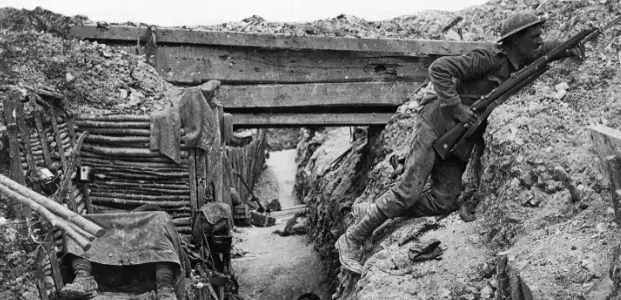The Great War: A Descent into the Maelstrom (1914-1918)
World War I, a conflict of unimaginable horror, shattered the fragile peace of Europe in 1914. What began as a localized dispute in the Balkans spiraled into a global maelstrom, engulfing nations across continents and leaving behind a legacy of devastation that continues to resonate today. This wasn’t just a war; it was a crucible that reshaped the world order, ushering in a new era of political, social, and economic upheaval.
A Tangled Web of Tensions
To understand the descent into war, we must delve deeper than the assassination of Archduke Franz Ferdinand, heir presumptive to the Austro-Hungarian throne. Europe in the early 20th century was a tinderbox waiting to be ignited. Nationalism, a fervent belief in one’s nation’s superiority, fueled competition and distrust among European powers. Imperial ambitions, and the desire to expand empires through conquest and colonization, further heightened tensions. A complex web of alliances, designed to deter aggression, paradoxically became a trigger. When Austria-Hungary declared war on Serbia after the assassination, a domino effect unfolded as countries honored their pacts, dragging others into the conflict.
The Alliance System: A Chain Reaction
The Allies, a loose coalition initially comprising France, Russia, Great Britain, and Serbia, found themselves pitted against the Central Powers: Germany, Austria-Hungary, the Ottoman Empire, and Bulgaria. This alliance system initially intended to maintain stability, had become a tangled web that ensnared nations in a fight that wasn’t necessarily their own.
The Illusion of a Short War
Fueled by patriotic fervor and a belief in technological superiority, nations on both sides initially harbored the illusion of a swift victory. However, those hopes were quickly dashed as armies clashed in a brutal stalemate on the Western Front. Trench warfare, a gruesome innovation of the war, became synonymous with World War I. Soldiers endured appalling conditions in muddy, disease-ridden trenches, separated from enemy lines by a desolate wasteland known as no man’s land. Machine guns, artillery, and poison gas created a killing zone where waves of soldiers charged only to be cut down in a horrifying ballet of death.
Beyond the Trenches: A Global Conflict
The war wasn’t confined to the Western Front. The Eastern Front, stretching from the Baltic Sea to the Black Sea, witnessed equally brutal fighting between Russia and the Central Powers. Naval battles raged on the high seas, with Germany’s U-boat campaign aiming to strangle British trade. Colonial territories in Africa, Asia, and the Pacific became battlegrounds as European powers fought to secure their empires. Millions of non-European soldiers were recruited and served in these distant theaters, often overlooked in the traditional narratives of the war.
The Human Cost: A Generation Sacrificed
The human cost of World War I was staggering. An estimated 16 million soldiers perished, their bodies littering battlefields or succumbing to disease and injuries. Millions more were left physically and mentally scarred. Civilians, caught in the crossfire of shelling and forced displacement, also suffered immensely. Food shortages, economic devastation, and the Spanish Flu pandemic, fueled by the movement of troops on a global scale, added to the misery.
The Home Fronts: Women Step Up
The war transformed societies on both sides of the conflict. Women, traditionally relegated to domestic roles, entered the workforce in unprecedented numbers, filling factories, running farms, and working in vital support services. This shift in gender roles would have lasting consequences, paving the way for greater equality in the decades to come.
Technological Advancements: A Double-Edged Sword
Technological advancements played a crucial role in the war, often leading to more lethality rather than decisive victories. Tanks, airplanes, and chemical weapons ushered in a new era of warfare, but their impact was often devastating for both sides. The horrors witnessed on the battlefield fueled a sense of disillusionment with progress and the idea of a civilized world.
The Tide Turns: America Enters the Fray
By 1917, the tide of the war began to turn. The United States, initially reluctant to enter the conflict, joined the Allies after German unrestricted submarine warfare threatened American trade and interests. The influx of fresh American troops and resources provided a critical boost to the Allied cause.
The Road to Versailles: A Flawed Peace
The war finally ended on November 11, 1918, with the signing of the Armistice Agreement. The Treaty of Versailles signed in 1919, aimed to establish a lasting peace. However, the treaty’s harsh terms, particularly the punitive reparations imposed on Germany, sowed the seeds of future conflict. The resentment it generated in Germany ultimately contributed to the rise of Nazism and the outbreak of World War II.


Comments are closed, but trackbacks and pingbacks are open.